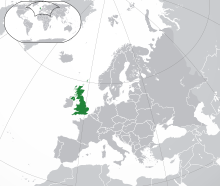|
United Kingdom and the International Monetary Fund The United Kingdom joined the IMF on December 27, 1945, becoming one of the first 40 nations to join the global organization.[1][2][non-primary source needed] The intention of the IMF was to help rebuild the economies' of Europe following World War II and promote the missions of global cooperation and economic growth established at the Bretton Woods Conference.[3][non-primary source needed] The UK currently holds 4.03 percent of the total votes for the IMF and a 20,155.1 (in million of SDR's) quota.[4][non-primary source needed] HistoryThe 1976 Debt CrisisAnthony Barber, a member of the conservative party in Britain, created a budget in 1972 in an attempt to have his party seize power in the 1974 election. This budget lead to a period of growth followed by a time that would result in high levels of inflation, almost 25%, for the pound. In 1976 investors later became wary of the value of sterling causing the value of the pound to become very low against the US dollar. This balance of payment issue coupled with citizens losing confidence in spending, would result in the UK borrowing 3.9 billion from the IMF. This was the largest loan from the IMF at the time, but only half of the loan would be taken out. The UK rebuilt their reserves and repaid the loan by 1979.[5] Present Day 2020 - 2023In 2023 the IMF had stated that it saw the UK's GDP contracting by 0.3% this coming year meaning that it would be the worst performing rich economy. In February 2023 the UK had an inflation rate of 10.4% which outweighed that of the European Union and United States. However, the IMF has declared that the UK is doing better and may no longer need IMF assistance. Their labour wages are lagging behind the inflation rate and could get worse in the future, but as for now they are on a trajectory towards growth.[6][7] References
|
Portal di Ensiklopedia Dunia